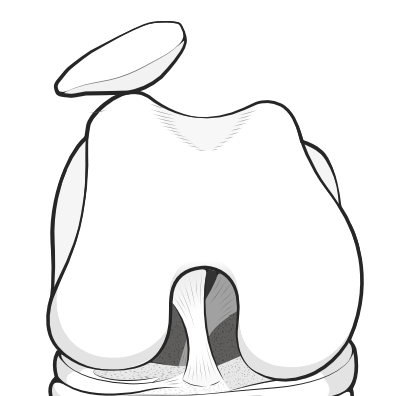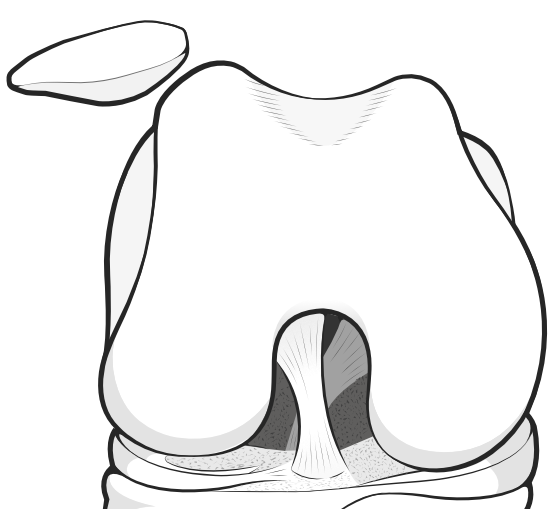In patellofemoral instabilty the patella (kneecap) changes its relationship to the groove of the femur bone (thighbone) and may partially or fully de-rail.

In subluxation the kneecap may feel uncomfortably about to come right out of the underlying groove, but then it pops back into place.

With dislocation the kneecap comes right out of its groove, creating a painful and ugly deformity. In some cases it pops back but it other cases it stays like that and the person cannot straighten the knee without help.
What constitutes patellar instability?
Patellar instability is a continuum. Patients may progress from one level of instability to another:
- Anterior knee pain - pain in the front of the knee
- Giving way - a sudden inability to hold weight, so that the knee collapses
- Subluxation - when the kneecap pops to one side, and then pops back again
- One-time dislocation - when the kneecap completely derails, but this does not recur
- Recurrent dislocation - when de-railing of the kneecap occurs quite often
- Habitual dislocation - when the kneecap de-rails all the time
Structural causes of patellar instability
Factors which contribute to an unstable kneecap include one or more of -
- Trochlear dysplasia
- Patella alta
- Valgus deformity (knock-knees)
- Medialised trochlear groove
- Lateralised tibial tubercle
Synonyms:
patellar instability
kneecap instability
-
Symptoms -
Causes -
Office evaluation -
Surgery -
- Distal realignment
- Proximal realignment
- Elmslie-Trillat procedure
- Maquet procedure
- Galeazzi procedure
Forum discussions -
- Please Help - Patella Dislocation (Subluxation).
- Constant maltracking/subluxation?
- Opinions on Braces for Subluxation/Dislocation.
From the Experts -
- Expert view - Patellar Instability – a Continuum - by Dr Lars Blønd (Knee Surgeon)
- Expert view - Lateral Release - why the bad reputation? - by Dr Lars Blønd (Knee Surgeon)
- Expert view - TT-TG distance - by Dr Lars Blønd (Knee Surgeon)
- Expert view - The J-Sign - by Dr Lars Blønd (Knee Surgeon)
- Course - An alternative viewpoint on Anterior Knee Pain - by Dr Thomas Smallman (Knee Surgeon)